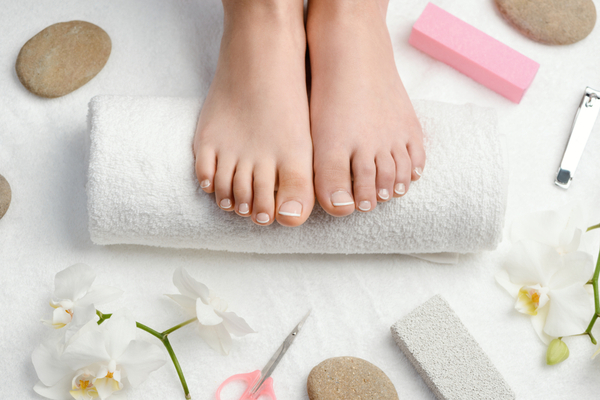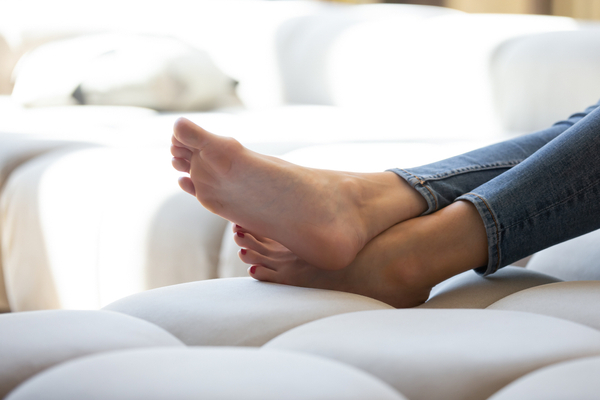With no access to beauty therapist or podiatrists, many of us are turning to DIY footcare treatments. So why not take some time out today to pamper your hard-working feet? We’ve rounded up some expert footcare tips and products for the perfect DIY pedicure.
Buy the latest issue of Top Santé magazine by clicking here!
1. Treat yourself to a foot bath
A foot bath is essential for good footcare and it’s also a great way to relax! Expert podiatrist Dr Bharti Rajput recommends adding a squeeze of lemon juice, some salt or a few drops of essential oils to your foot bath.
Ot, if you’re looking for a more luxurious experience, try adding a capful of Weleda Pine Reviving Bath Milk (£14.95) to soften your skin.
2. Moisturise your daily for good footcare
“For good footcare you should moisturise your feet daily. If you don’t have time in the morning, do it at night. First, wash your feet and then apply a nice thick foot cream,” says Dr Rajput.
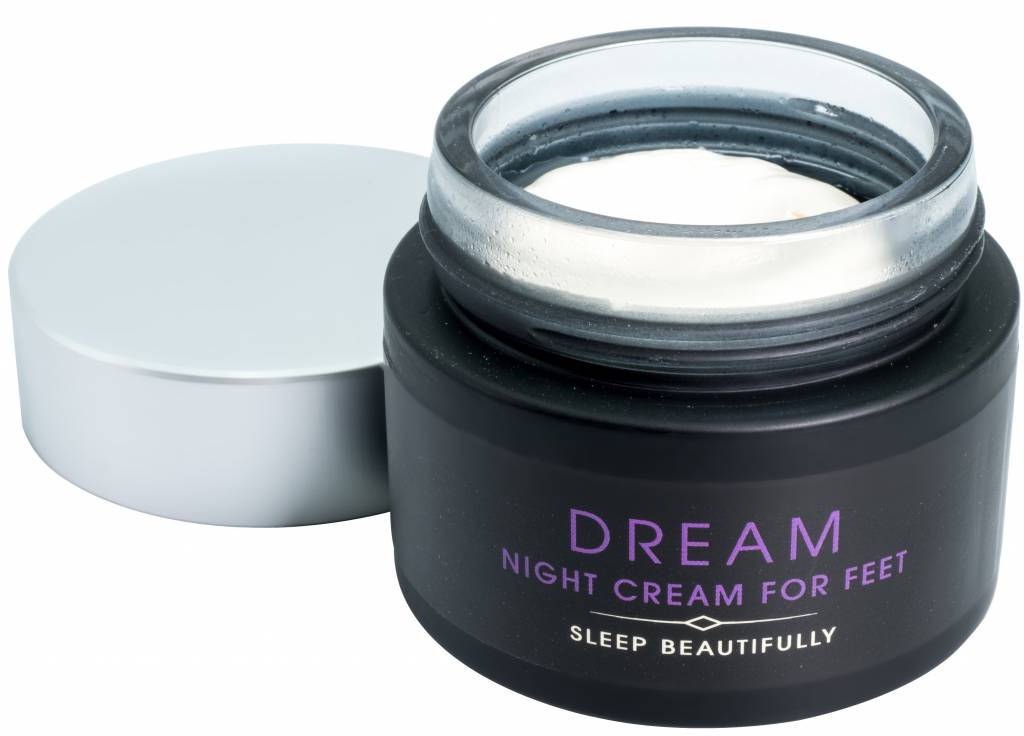 Try the DREAM Night Cream for Feet from Kiss the Moon (£26), which is designed to nourish feet overnight, leaving them soft and supple by the morning.
Try the DREAM Night Cream for Feet from Kiss the Moon (£26), which is designed to nourish feet overnight, leaving them soft and supple by the morning.
3. Choose a good foot cream
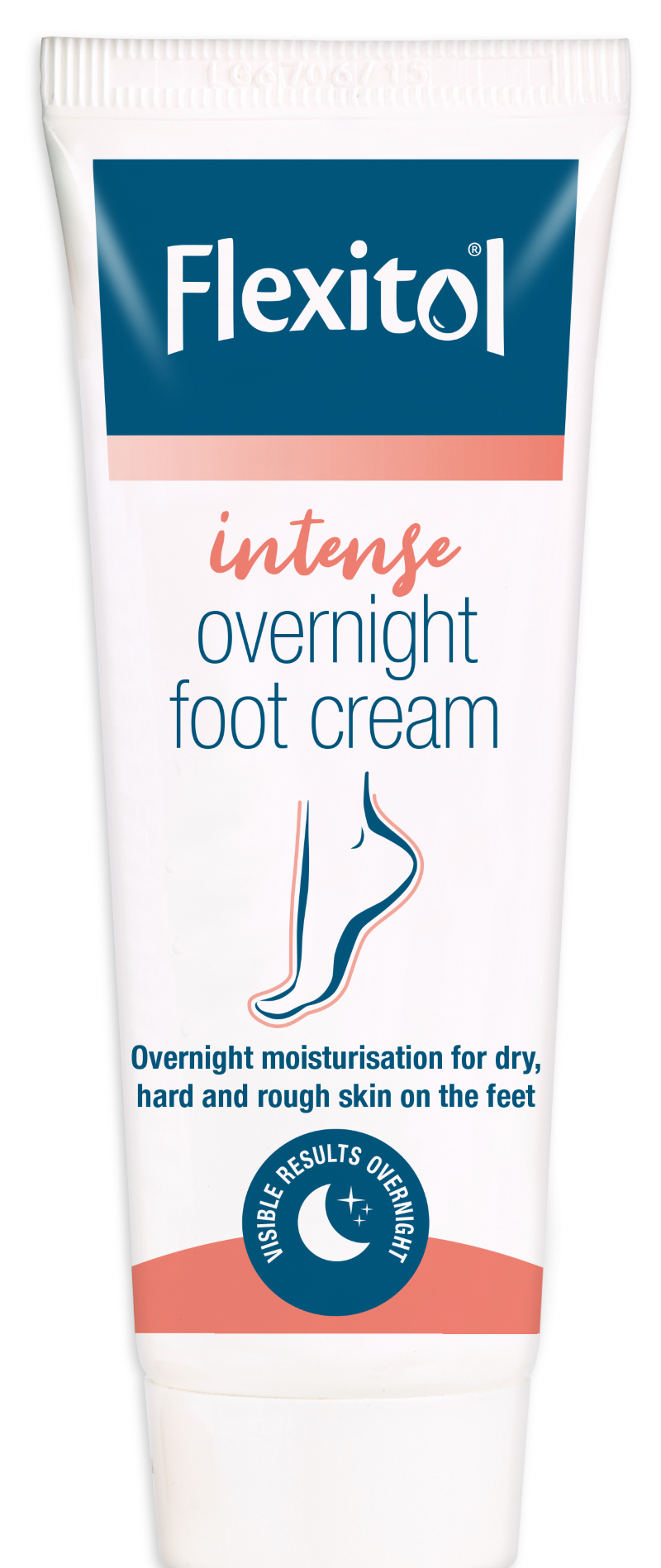 When choosing an intensive foot cream, Dr Rajput recommends using one containing urea. “Urea is a naturally occurring element of your skin that improves hydration. It does this by increasing the water uptake from the dermis.
When choosing an intensive foot cream, Dr Rajput recommends using one containing urea. “Urea is a naturally occurring element of your skin that improves hydration. It does this by increasing the water uptake from the dermis.
“If your skin is dry and lacks natural moisture, footcare creams containing urea are an effective way to replicate the hydration process.”
Try the Flexitol Intense Overnight Foot Cream (£6.99), which contains 30% Urea.
4. Pay attention to your heels
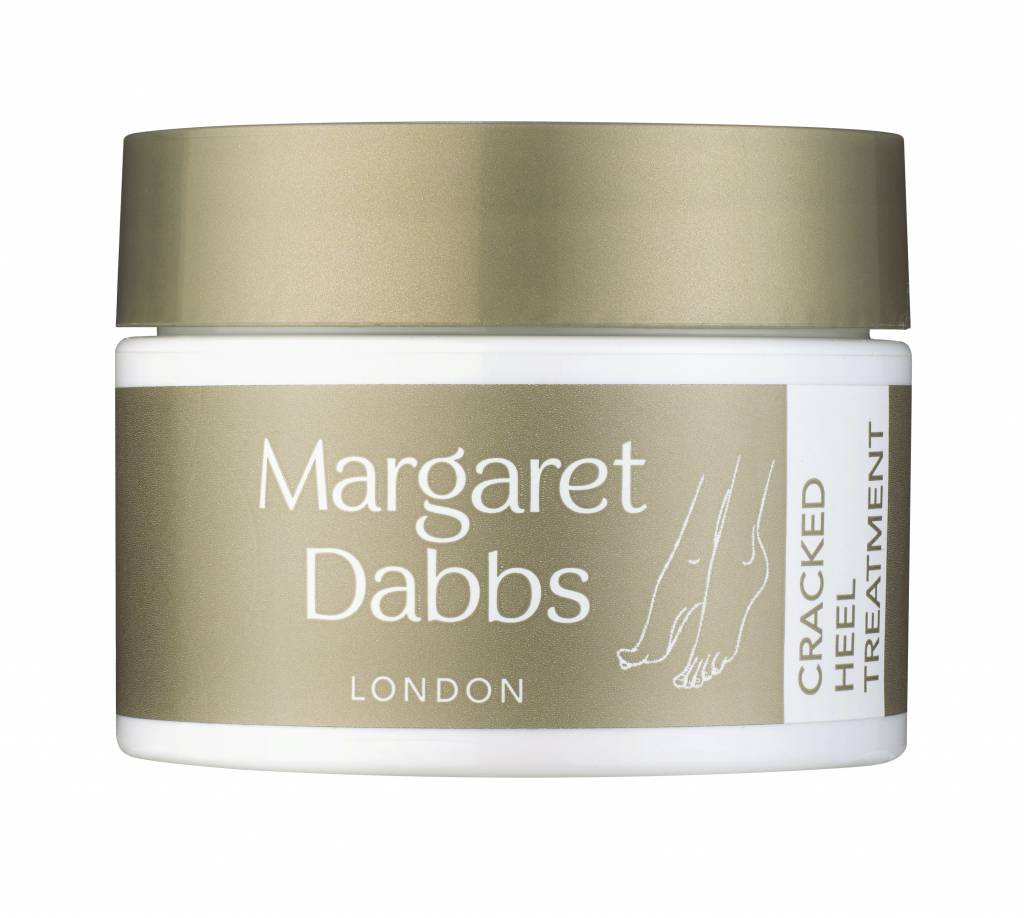 Heels can become incredibly hard and inflamed due to the constant pressure and weight placed upon them throughout the day. Margaret Dabbs Cracked Heel Treatment (£18) relieves and repairs dry, cracked heels as it’s formulated with pure oregano and manuka tree oils, which are known for their antibacterial and antiviral properties.
Heels can become incredibly hard and inflamed due to the constant pressure and weight placed upon them throughout the day. Margaret Dabbs Cracked Heel Treatment (£18) relieves and repairs dry, cracked heels as it’s formulated with pure oregano and manuka tree oils, which are known for their antibacterial and antiviral properties.
The balm also includes salicylic and benzoic acids, which target existing infection and remove dead skin cells.
5. Good footcare includes looking after your toenails
“Cut your toenails straight across and try not to get all the white edge off. Leave a bit of the white edge as it is there to protect the protective seal between skin and the nail,” says Dr Rajput.
“Also, if you cut nails down too short you can start to get ingrown toenails. In terms of tools, use toenail clippers, which are generally the best. Then use an emery board to get rid of any sharp edges.”
Struggling with nail discolouration? Try Flexitol Nail Revitaliser Gel (£8.99), which conditions and treats discoloured and thickened nails. The triple-action formula contains an optical brightener to remove discolouration, urea to soften thickened nails, and keratin to condition and restore nail quality.
6. File away hard skin
“You can get rid of dry skin on your feet by using a foot file. Always use on a dry foot, never on a wet foot,” says Dr Rajput. “When the skin is wet, it tends to become more rubbery. However, on a dry foot, you can actually buff the skin down. Put a piece of kitchen towel or newspaper on the floor and you’ll get great pleasure in seeing white, powdery hard skin flaking off! ”
Magnitone’s Well Heeled Rechargeable Express Pedicure System (£25) gently buffs away hard, cracked skin from your feet. The micro-crystal rollers are perfect for targeting dry skin under toes and along the curves of your feet. For extra rough areas, there’s the Extra Buff roller head for intense hard skin removal.
7. Get a complete footcare pedicure set!
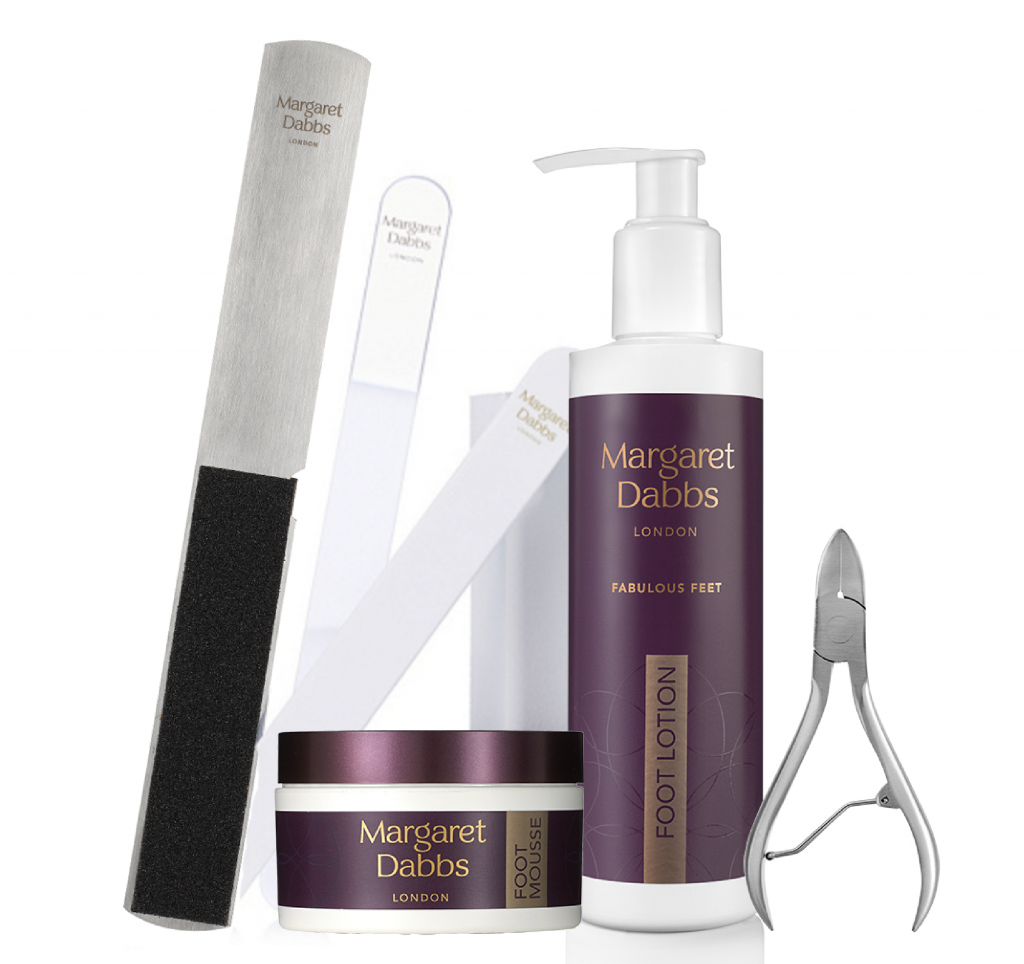 Treat yourself to a full pedicure at home with the Margaret Dabbs Perfect Home Pedicure Set (£79). It includes a Professional Foot File, an Intensive Hydrating Foot Lotion, an Exfoliating Foot Mousse, a Professional Curved Toe Nail Clipper, a Crystal Nail File, a White Block Buffer and a Super Shiner Buffer for the perfect footcare solution at home. Each set also includes full instructions and tips on how to use each product.
Treat yourself to a full pedicure at home with the Margaret Dabbs Perfect Home Pedicure Set (£79). It includes a Professional Foot File, an Intensive Hydrating Foot Lotion, an Exfoliating Foot Mousse, a Professional Curved Toe Nail Clipper, a Crystal Nail File, a White Block Buffer and a Super Shiner Buffer for the perfect footcare solution at home. Each set also includes full instructions and tips on how to use each product.
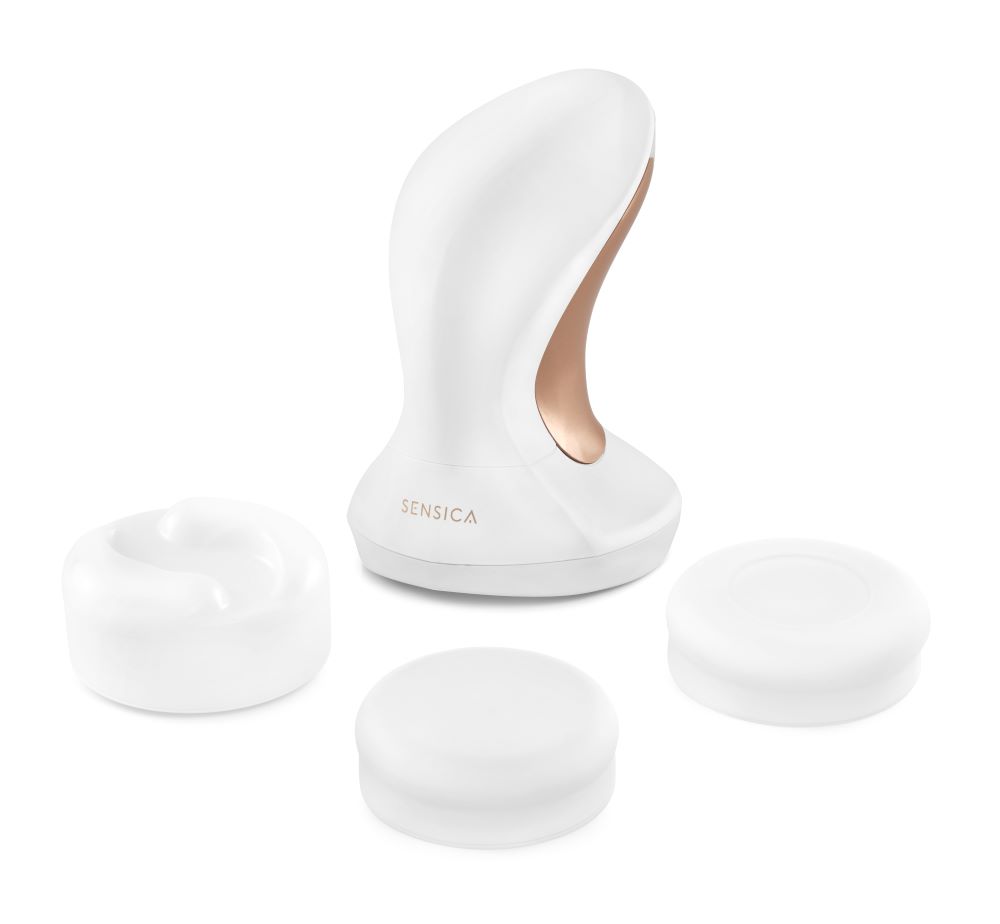
The Sensica Sensimatch (£149.99) is also a great tool for at-home pedicures: the three-in-one gadget offers skin peeling, pedicure and massage.
8. Treat foot problems
If you’re struggling with verrucas, warts, corns, or fungal nail infections, read on for our expert advice and product recommendations to help you manage these footcare problems at home.
To identify your foot problems, click here to visit the NHS page on foot health.
Verrucas
Corns
“A corn is a small, usually conical structure that forms from pressure. It is formed within the skin, is very hard, and can cause a lot of pain,” says Tony Gavin.
“To reduce a corn, gently file away the hard skin using a foot file. Again, don’t over file or apply too much pressure as this can make the surrounding skin sore. Once all of the hard skin has been filed away, use a good moisturiser to re-hydrate your feet.
“You only need a pea sized amount. Keep up with the moisturising daily and you’ll soon start to notice the difference.”
Footcare tips to deal with corns:
- Take a piece of chiropody felt (available from pharmacies) and cut out a small rectangular piece (approx 4cm by 2cm).
- Then, fold the felt in half and proceed to cut a circular shape in the centre of the felt without cutting through the outer felt.
- Make sure that your skin is clean and dry before you apply the pad. If you have recently applied moisturiser, the tape may not stick to your foot.
- The aim of the corn pad is to take away the pressure that is aggravating your corn. Place the pad onto the sole of your foot with the corn centred in the cut out section of the felt.
- Take a piece of medical tape and secure the felt into place.
- Don’t worry about getting your dressing wet. If it does become wet, simply pat dry with a clean towel.
As with many conditions affecting the foot, it’s always all about the shoes. Soft materials and adequate room are usually all that is required to prevent corns. The toe box of a shoe is really important, although it may be wide enough, a quick check of whether or not its depth is adequate is also advised.”
Fungal Nail Infections
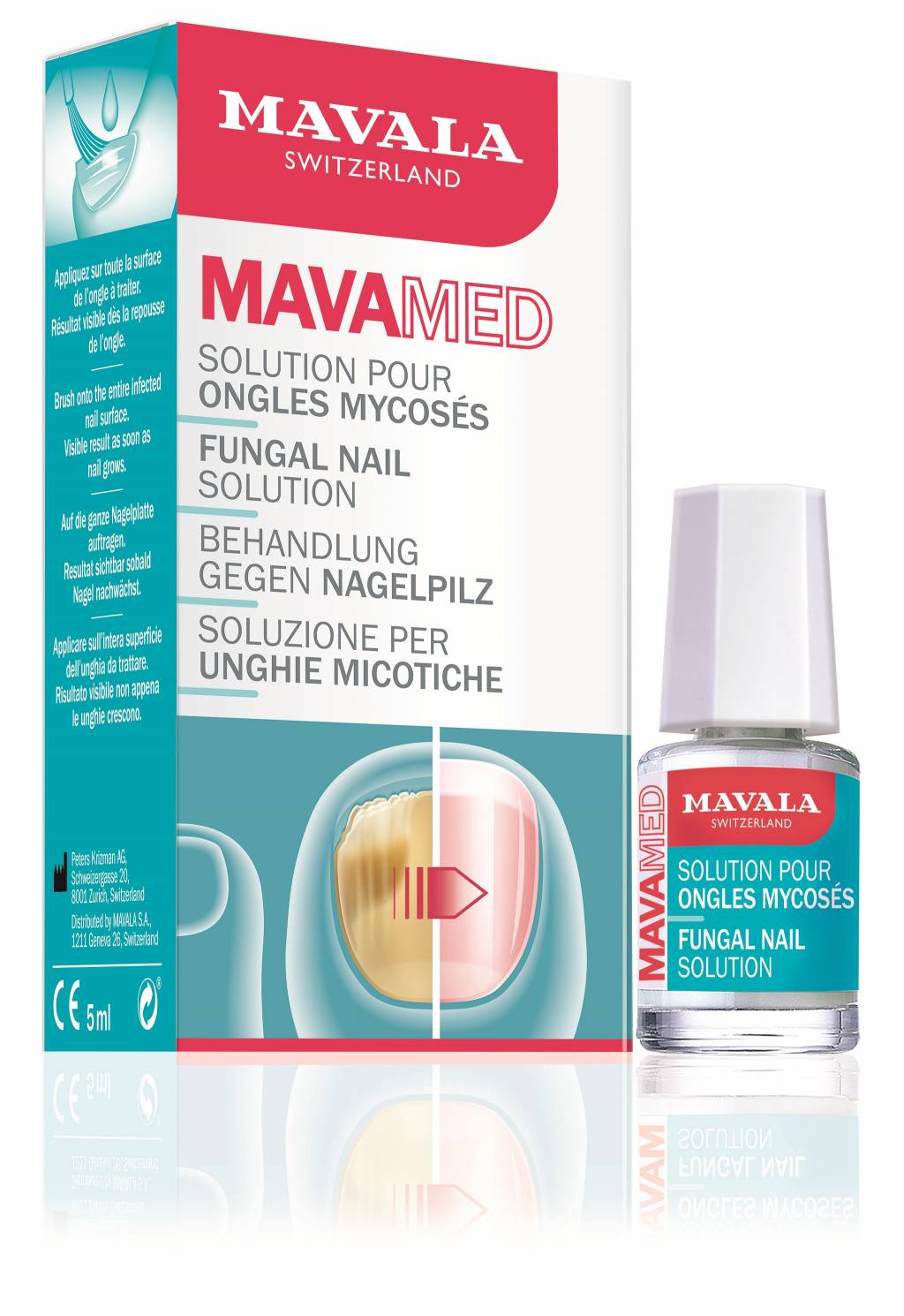 For fungal nail infections, try the Mavala Mavamed Fungal Nail Solution (£18.50). It contains high concentrate Tea Tree Oil to kill off the infection, along with a blend of essential oils and lactic acid, to reduce the nail’s acidity, creating an unfavourable environment for the infection.
For fungal nail infections, try the Mavala Mavamed Fungal Nail Solution (£18.50). It contains high concentrate Tea Tree Oil to kill off the infection, along with a blend of essential oils and lactic acid, to reduce the nail’s acidity, creating an unfavourable environment for the infection.
The key ingredient Urea penetrates the nail, allowing these active ingredients to reach the nail bed where the infection lies.

